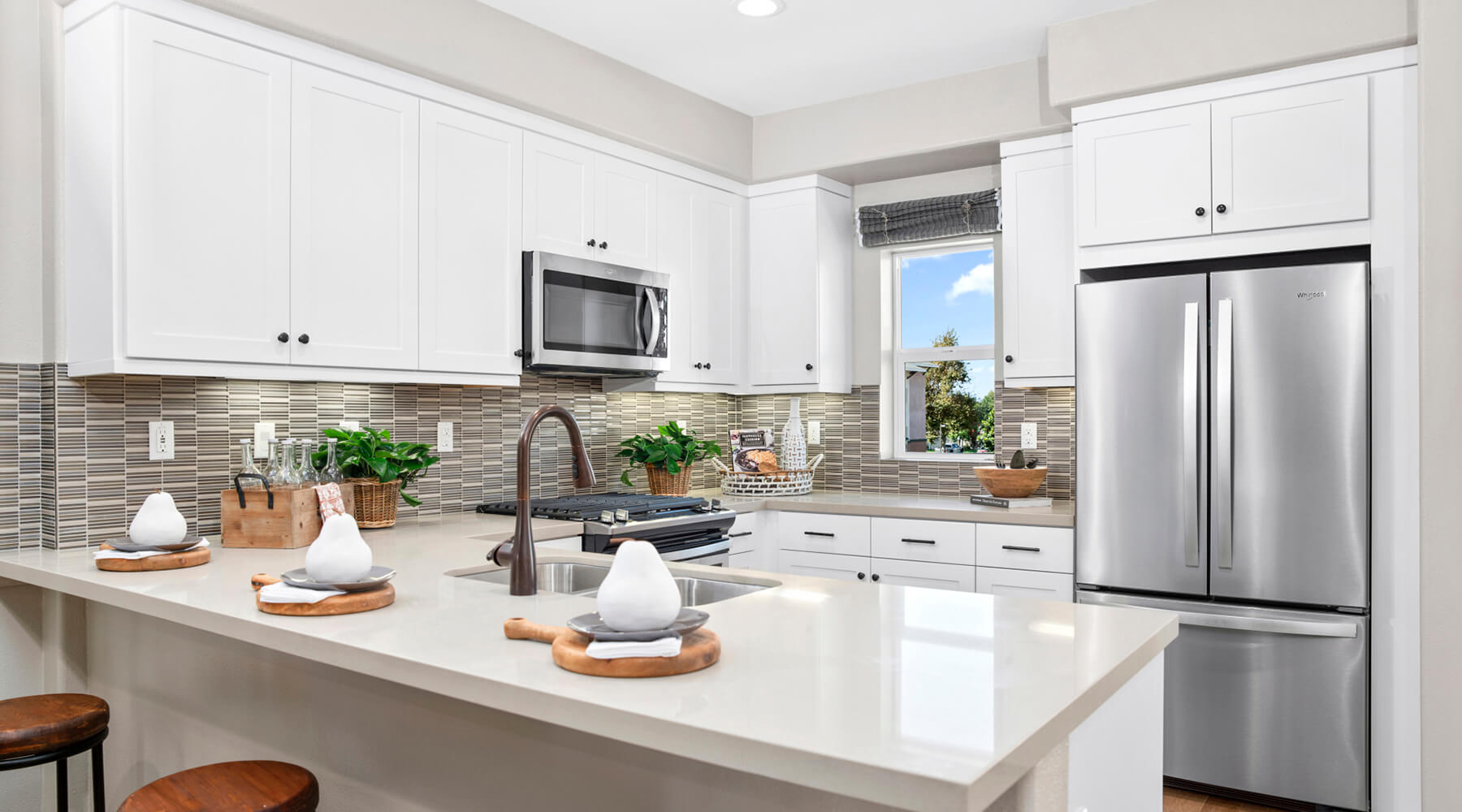How Filling Your Fridge Can Save Energy and Trips to the Grocery Store
Feb. 19, 2018

The refrigerator is by far one of the largest power consumers in your new home, often second only to the HVAC system with either the AC or furnace running at full blast. If you monitor the power from a smart outlet, you can watch the fridge cycle as it spins up to add more cold and spins down to sit at rest. You can watch the refrigerator use up energy, but reducing that cost is an entirely other matter and most people wouldn’t even know where to start. Take a moment to think about it, do you actually know or understand how the refrigerator keeps everything so cold on the inside?
Thermodynamics is complicated and the way that refrigerators work complicates the issue even further as they, rather than creating cold, pull heat out of the box instead, which is why there is often a warm vent at the bottom of a hard-working refrigerator. The key to reducing the amount of energy your refrigerator requires out your total new home utilities is to reduce the amount of work it has to do to cool down the inside and keep it cool.
Pack Your Freezer Tightly
If you’ve ever seen one of those freezers that seems to have every single crack and crevice stuffed with boxes and bags of frozen things or simply loose ice, then you’ve actually seen an ideally packed freezer for energy efficiency. Believe it or not, your freezer at home follows the same rules of temperature that grocery store baggers have understood for centuries: cold keeps cold. Just as you would pack all your frozen goods together to keep them frozen on the way home in the car and how small objects left in that bag get very cold, the freezer functions off the same principles.
While, of course, your freezer does produce its own freezing cold temperature, remember if you pack your frozen foods tightly together in your freezer, they will keep each other cold and reduce the amount of work your freezer will need to do.
Fill Up the Fridge
The rule of thermodynamics we just explored applies almost equally well to the task of reducing the amount of energy your fridge compartment needs to use as well, but without the benefit of actually frozen things to do the cooling. Instead, your fridge works best when everything inside is a uniform temperature and remains that temperature. To understand this, imagine a cold refrigerator turned off and left open for half an hour. While the defrost puddle would be epic, the most notable factor is the inside of the fridge would probably be warm.
Any food you took out of the fridge, on the other hand, might still be a bit cool. What this means is the mass of cool items in the refrigerator both reduces the cubic feet of air that needs to be cooled, and dense internal items like ham or potato salad will first gather cold and then become cold batteries on their own, easier to keep cool because the items are self-cooling. That said, if you don’t have that much food in the fridge or couldn’t eat it all if you did, simply putting a few large jugs of water inside will make a significant energy difference.
Stocking Up to Save Power
The arguments for making fewer but larger trips to the grocery store are myriad including saving gas on extra drives and the ability to stock up on ingredients for two weeks of recipes. Today the goal is to increase the energy efficiency of your refrigerator. Carefully buy enough frozen food to stuff the freezer but no more unless you have an extra freezer for meat and random things.
As for the fridge, let your imagination run wild with what you can possibly cook with all your ingredients. This is your opportunity to stock up on unusual, interesting and healthy foods like a variety of fruit juices, several forms of your favorite proteins and plenty of vegetables for the crisper drawers. If there’s any shelf space left over when you’re done stocking up, simply throw in water bottles for added cooling mass.
When stocking up your fridge is the answer to energy inefficiency, saving on your power bill has never been so delicious.
Are you looking for a new home (with a great stainless fridge!) in Orange County, Long Beach or the Los Angeles metro area? Brandywine Homes is opening six new communities this year offering a combined 265 single-family homes and townhomes. Click here for more information.





